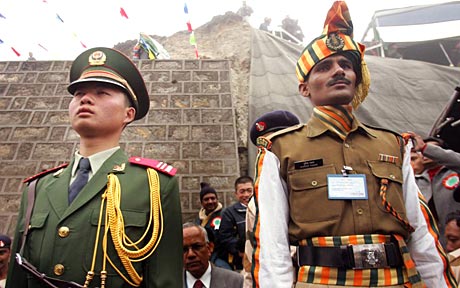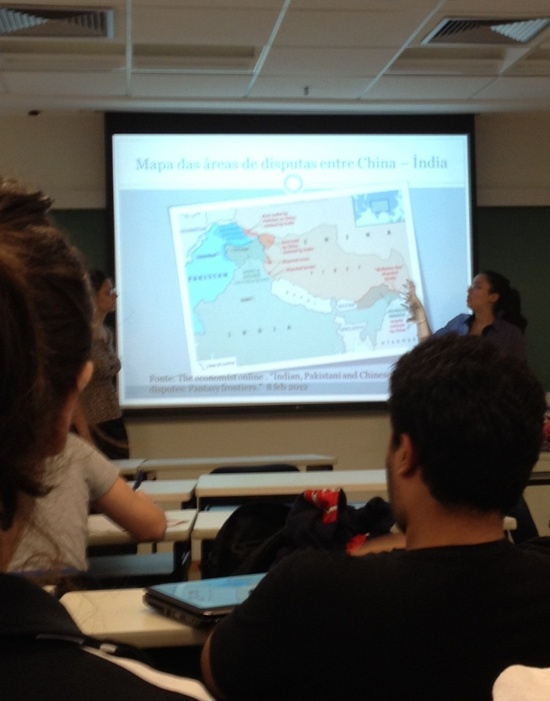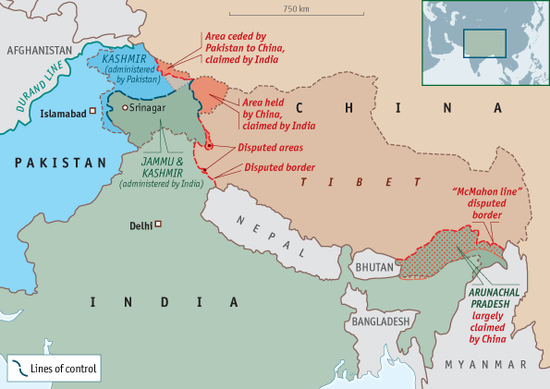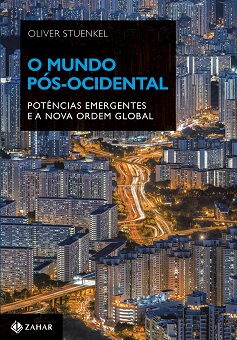
Whenever two rising powers sit next to each other, the chance for conflict greatly increases as their growing spheres of influence quickly overlap – one of the main reason why Europe’s history is full of bloody wars. This unfortunate constellation now becomes increasingly visible in Asia, where a rising China and a rising India begin to claim influence over the same regions. After India and Vietnam agreed to jointly explore oil in the South China Sea, an aggressive op-ed in The Global Times (a Chinese newspaper) recently accused India of “poking its nose where it does not belong.” China is busy creating alliances with India’s neighbors, while India has – to China’s dismay – begun to strengthen ties with Japan, Australia, and the United States. While trade between India and China is growing, this alone may not be enough to prevent an escalation, as World War I made abundantly clear. Similar to today’s China and India, Imperial Germany felt “encircled” – a word analysts from both China and India use with growing frequency.
Today, a group of three students in my class on foreign policy presented a briefing to a fictitious 41-year old recently named Indian Prime Minister who seeks to reassess India’s China policy. The students developed a series of ideas about what could be done to solve one of the most urgent problems that weigh on the relationship, namely the simmering border conflicts. Their initial historic analysis made clear that there are many dimensions and different actors involved, making the question of Arunchal Pradesh one of the most complex riddles of our time. Therefore, at the outset, they argued there was simply no realistic solution, and all options presented would be highly improbable.
Still, the group argued that potential benefits of rapprochement – ranging from trade to security cooperation to seeking common positions in multilateral settings – were simply too great to ignore, creating a great incentive to great a stronger partnership between India and China.
One of the noteworthy options they presented to get there was a ‘grand bargain’, in which India would cede Arunchal Pradesh to China, thus fully recognizing China’s control over Tibet, against Beijing’s acceptance that Jammu and Kashmir is de fact part of India (and cede the territories there occupied by China). In addition, China would have to terminate all Kashmir-related support to Pakistan and remain neutral in any possible conflict over Kashmir between Pakistan and India. This would include the removal of about 10,000 Chinese troops from Pakistan’s “Northern Areas” (also known as Gilgit-Baltistan).
The underlying rationale of this proposal is that Arunchal Pradesh has less strategic value for India while the possibility of gaining control over larger swaths of Jammu and Kashmir has important geopolitical implications.
Several students opposed this recommendation and argued that India should invest more in its military capacity and never give up its control over Arunchal Pradesh. One important reason would be that other restive regions in India could increase their pressure on New Delhi to secede. The opposition could depict the new government ask weak in the face of China. Others pointed out that China would only feel emboldened, militarize the border further and soon claim another chunk of Indian territory. Some argued that it would be difficult to monitor China’s promise to stay out of Kahsmir. Finally, a student said that since India could expect to grow faster over the coming decades and eventually overtake China, it should simply sit back and wait until the power gap between the two closes, thus acting from a stronger position. Some may question the usefulness of such highly speculative long-term projections. Despite their inaccuracy, they are a crucial element when seeking to answer the most important question of all: Is there enough space in Asia for two superpowers?
No single proposal will ever convince anyone, and China would indeed be highly unlikely to accept having its activities in Pakistan curtailed by India, especially given that Pakistan figures prominently in China’s strategy to strengthen its presence in the Indian Ocean.
While these proposals may seem unrealistic to many (in fact, they are by definition), these types of activities are extremely useful to stimulate the debate and help young scholars deal with situations some of them are likely to encounter as policy makers later in their career. Until then, perhaps, India and China will have overcome their differences.
Read also on China – India relations:
China vs. India: Will the “contest of the 21st century” lead to war?
Book review: “Monsoon: The Indian Ocean and the Future of American Power” by Robert D. Kaplan
Future Indian leader deserves more attention
Read also on China:
Peace prize distances the West from China
Book review: “The Party: The Secret World of China’s Communist Rulers” by Richard McGregor
Book review: “The Dragon’s Gift: The Real Story of China in Africa” by Deborah Brautigam
Photo credit: Gurinder Osan/AP










